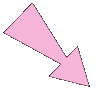Tips For A Beginner In The First Time Using The Sewing Machine
We all look for the best sewing machine, especially for beginners. Unfortunately, there is no such thing as an absolute good machine that can make an amateur become a pro from the first time sewing. The only thing that is able to make you a pro is practicing hard and frequently for a long time. However, we have here a few tips that won’t shorten your sewing journey but will help this path a little bit easier and more effectively.
So, before you start your very first time sewing, spare a few more minutes to read these step-by-step guides. They are all basic techniques and tips, which won’t be hard to follow but are sure to be helpful.
1. Read the manual first, keep it close by, and make notes while sewing.

Read the sewing machine manual first
There is nothing more important for a first-time sewist than reading all the sewing manuals before sewing. Even the  best easy-to-use sewing machine for beginners has its own trouble if you don’t read the manual first. And if you have read them all, don’t forget to keep it close by as you sew to check up if needed. In such things as sewing, doing right is the first step before we do any creative.
best easy-to-use sewing machine for beginners has its own trouble if you don’t read the manual first. And if you have read them all, don’t forget to keep it close by as you sew to check up if needed. In such things as sewing, doing right is the first step before we do any creative.
Besides, prepare a notebook alongside your sewing table, so you can take notes whenever you need, it is very important in getting to know your machine as well as learning sewing at the first stage. Normally, when starting something new, we try to learn from the tips of others, but from our point of view, learning from your own notes is also essential too.
2. Practice stitching straight and bind the stitches onto the note for references.
For a beginner, there is so tempting to start sewing right away and try fancy stitches as many as they can. But it is more necessary to adjust your stitches and make them right and straight first.
As our suggestion, you should create a habit of getting these kinks out and trying to sew in a straight line. Then, you can cut out and bind scraps of these stitches onto the notebook for later references of your own. Those are kinds of fabric swatches for stitches, but you also can do the same thing for fabric classification and references.
3. Store your bobbins in color order or in often-used order for handy use.
Even the best sewing machine for starters  won’t help you to become a pro sewist if you don’t finger a way to sew wisely. And you don’t have to be a pro to do sewing things wisely. Indeed, you can start to professionalize your sewing path with a very small thing like classifying bobbins and threads in order.
won’t help you to become a pro sewist if you don’t finger a way to sew wisely. And you don’t have to be a pro to do sewing things wisely. Indeed, you can start to professionalize your sewing path with a very small thing like classifying bobbins and threads in order.
Some people like to follow the rainbow order while others love to keep them under a rack of matching spools of thread. For us, we are highly recommended an often-used classification that is, somehow, more useful for a beginner.
4. Use a large magnet or a set of small magnets to keep straight pins handy.
The meaning of using magnets is for holding things in place, especially when you sew alongside with an ironing board and the magnets will help to stick in nicely. You can use a large piece of magnet or glue underneath a set of small magnets to make sure the straight pins are handy alongside while you sew.
5. Don’t forget to set up an extra magnet to collect fallen pins.

Set up an extra magnet to collect fallen pins
The fallen pin is sort of unavoided while sewing, no matter whether you sew with a machine or by hand. Such a thing is quite dangerous, especially if you have kids, but you can fix it with just a piece of magnet. Set up a magnet space on the sewing table or on the floor to collect these fallen pins, then your sewing space is free of danger.
Those are all the tips we want to share with you about sewing. We hope that you can find it helpful. In case you did know them all and now look for the  best sewing machine for beginners, other articles on our website CraftsSelection.com can help you out.
best sewing machine for beginners, other articles on our website CraftsSelection.com can help you out.